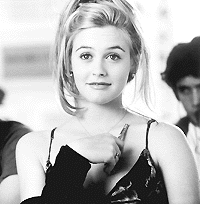Scanlines
Clueless
Fri., Aug. 7, 1998
with Alicia Silverstone, Dan Hedaya, Stacey Dash, Paul Rudd, Brittany Murphy, Wallace Shawn
|
|
-- Ada Calhoun
The Wild Bunch
D: Sam Peckinpah (1969)
with William Holden, Ernest Borgnine, Robert Ryan, Edmond O'Brian, Warren Oates, Jaime Sanchez, Ben Johnson and Emilio Fernandez
It's true that more rounds were consumed during the filming of The Wild Bunch than during the entire Mexican Revolution, and that Peckinpah's terrifying and beautiful ballets of death set the standard for 30 years of violence in film, but neither of these remarkable facts account for the power and majesty of this epic Western. Emotionally and philosophically complex, The Wild Bunch tells the story of Old West outlaws in a world where horses and Winchesters are being replaced by automobiles and machine guns, where bandit heroes with a macho code of loyalty are being replaced by the soulless killers. Pike (Holden) and his bunch attempt their last big hit when they are ambushed by a sad-faced former partner (Ryan) and his vile gang of bounty hunters. They flee to Mexico where they stumble onto a lucrative opportunity to rob a U.S. Army munitions train for a corrupt Mexican general. Here again, things don't go completely as planned. Three thrilling action sequences occupy the beginning, middle and end of this film, and the treatment of violence in each revolutionized filmmaking. The slow-motion cinematography and quick-cut editing, though, come off not as gimmicks but as serious meditations on man's simultaneous horror and fascination with death and gore. Although this existential poetry of images gives the film stunning visual value, it's really the development of the characters, the exploration of a creed in a moral vacuum, in short, the quiet scenes that give emotional resonance to the meaninglessness of the violence and make The Wild Bunch an unforgettable movie.
-- Jason Zech
Django
D. Sergio Corbucci (1966)
with Franco Nero, Jose Bodalo, Lordena Nusciak, Eduardo Fajardo
The first in a series of popular Django movies (i.e. Django the Bastard, A Few Dollars for Django, Django Shoots First, Vengeance Is a Colt .45) helped define the Italian tradition of "spaghetti Westerns" with a tormented antihero, extreme, sadistic levels of violence, and loud, heroic music. Django (Nero) trudges into town dragging a coffin behind him, guns down some bad guys from the gang that regularly terrorizes the town, and soon manages to get on the bad side of the gang and the Mexican revolutionaries both. We soon find out that the casket contains a large, early-model machine gun, and the townsfolk try to hire him for protection. The villains are so bad that they cut a man's ear off and then force him to eat it, a few people fall into quicksand that looks like a jumbo-size batch of pinto beans, and eventually the Mexicans torture Django by pummeling both his hands to bloody paws with a rifle butt, then letting horses stomp on them. The director follows in the footsteps of American directors like John Huston and Peckinpah by using the unforgiving Mexican desert almost like another character to itself. The Italians, however derivative their Westerns might have been, also put their own touches on the myth. Their Old West is one of grime, filth, weak whiskey and flat beer, amoral, trashy and bleak (later spaghetti Westerns would be informed with strong political overtones). Like the giallo genre also popular at the time, Django has a rather episodic, disjointed plot that favors brutal setpieces over a linear structure. The scenes of Django shambling miserably through endless gravy-like mud, dragging the casket like a millstone, are archetypal unto themselves.
-- Jerry Renshaw







